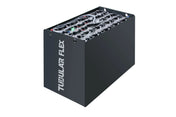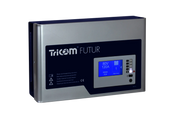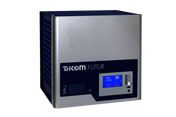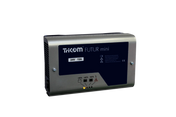Forklift batteries are among the most costly but essential components in forklift operation . To maintain full capacity and service life , worn-out components should be replaced promptly – significantly more cost-effective than investing in a new battery straight away. Here you'll learn which components are replaceable , when replacement is worthwhile, and which safety and maintenance instructions must be observed.
These spare parts for forklift batteries can be exchanged specifically
1. Battery cells (PzS, PzB, armor plates)
In traditional traction batteries such as PzS or PzB types, the battery consists of several individual cells. If one or more cells show a significantly reduced voltage or capacity, they can be replaced individually instead of replacing the entire battery.
Important: After replacing the cells, an equalizing charge of approximately 2.6 V per cell for 2–4 hours is required to avoid voltage differences between the old and new cells. This ensures that the battery operates evenly again.
Tip: Check the nameplate and the nominal voltage (e.g. 24 V, 48 V or 80 V) to find the right cell.
2. Battery cables & cable sets
Defective or corroded battery cables significantly impair charging and discharging processes. Excessive heat transfer can lead to scorching or failure. Replacing older batteries is particularly worthwhile to improve reliability and safety.
- available for 24 V, 48 V and 80 V systems
- compatible with Toyota , Linde , Jungheinrich and other brands
3. Pole screws, cell connectors & plugs
Terminal screws secure the electrical connection between the cells. Corrosion, acid stratification, or vibration can cause them to loosen. The optimal tightening torque for M8 terminal screws is 20–25 Nm , ensuring secure contact and corrosion protection.
Plugs , floats or connectors should also be replaced if they show visible wear to prevent leaks and voltage losses.
4. Housing parts & cell holders
Cracked brackets or damaged covers compromise safety. Use replacement parts with original dimensions and durable materials to maintain the stability of the battery tray.
Maintenance and safety during replacement work
Working on traction batteries requires specialist knowledge and appropriate protective equipment. Please note:
- Wear acid-resistant gloves (EN 374 Type A | K), safety goggles (EN 166 F) and an acid apron .
- In case of acid leakage : Neutralize the area with sodium carbonate , absorb the liquid and dispose of it as hazardous material.
- Defective cells or batteries may only be transported in UN-certified, acid-resistant containers according to ADR Class 8.
Automatic refilling: Properly maintain Aquamatik systems
Aquamatic systems make refilling with distilled water easy, but they require regular inspection. Perform a leak and function test at least once a year to prevent leaks or contamination. Otherwise, a clogged line can drain cells and drastically shorten their lifespan.
Repair, replace or have it refurbished – what’s worth it?
Those with specialist knowledge can replace components such as cells, cables, or connectors themselves. However, professional reconditioning is often more economical and safer.
At HK Handels GmbH we offer two proven options:
- Used forklift batteries : immediately available, tested, with documented capacity – ideal for urgent needs.
- Reconditioning your own battery : collection, testing, targeted replacement of defective parts – saves time and material, significantly extends the service life.
When you should rely on professionals
For safety and liability reasons, some work should only be carried out by qualified personnel, including:
- Replacement of individual cells (PzS / PzB)
- Working on electrical connections and terminal screw connections
- Installation or repair of Aquamatic systems
- Setting up and selecting suitable chargers
Incorrect handling can lead to short circuits , loss of capacity , or hazardous materials accidents . Our technicians perform these tasks nationwide, regardless of the manufacturer and according to the manufacturer's specifications .
Care, maintenance and inspection
- Regular visual inspection for cracks, corrosion and cable breaks
- Cleaning the battery terminals
- Refill with distilled water if necessary
- Uniform circulation of the electrolyte to avoid acid stratification
Chargers and accessories for forklift batteries
In addition to spare parts, suitable accessories play a key role in safety and efficiency.
- Aquamatic systems for automatic filling
- Battery water in canisters for manual refilling
- Electrolyte circulation for improved charging efficiency
- Chargers in 24 V, 48 V or 80 V – tailored to battery type and charging process
Conclusion: With the right spare parts and safety measures, your battery remains ready for use
The targeted replacement of cells , cables , or connector parts is a cost-effective alternative to purchasing new ones – especially in large fleets. Additionally, paying attention to correct installation, equalizing charging, and regular maintenance ensures the long-term service life and reliability of the battery.
Are you unsure whether repair, exchange or replacement is worthwhile?
We advise you individually and find the right solution – from spare parts to complete reconditioning.







